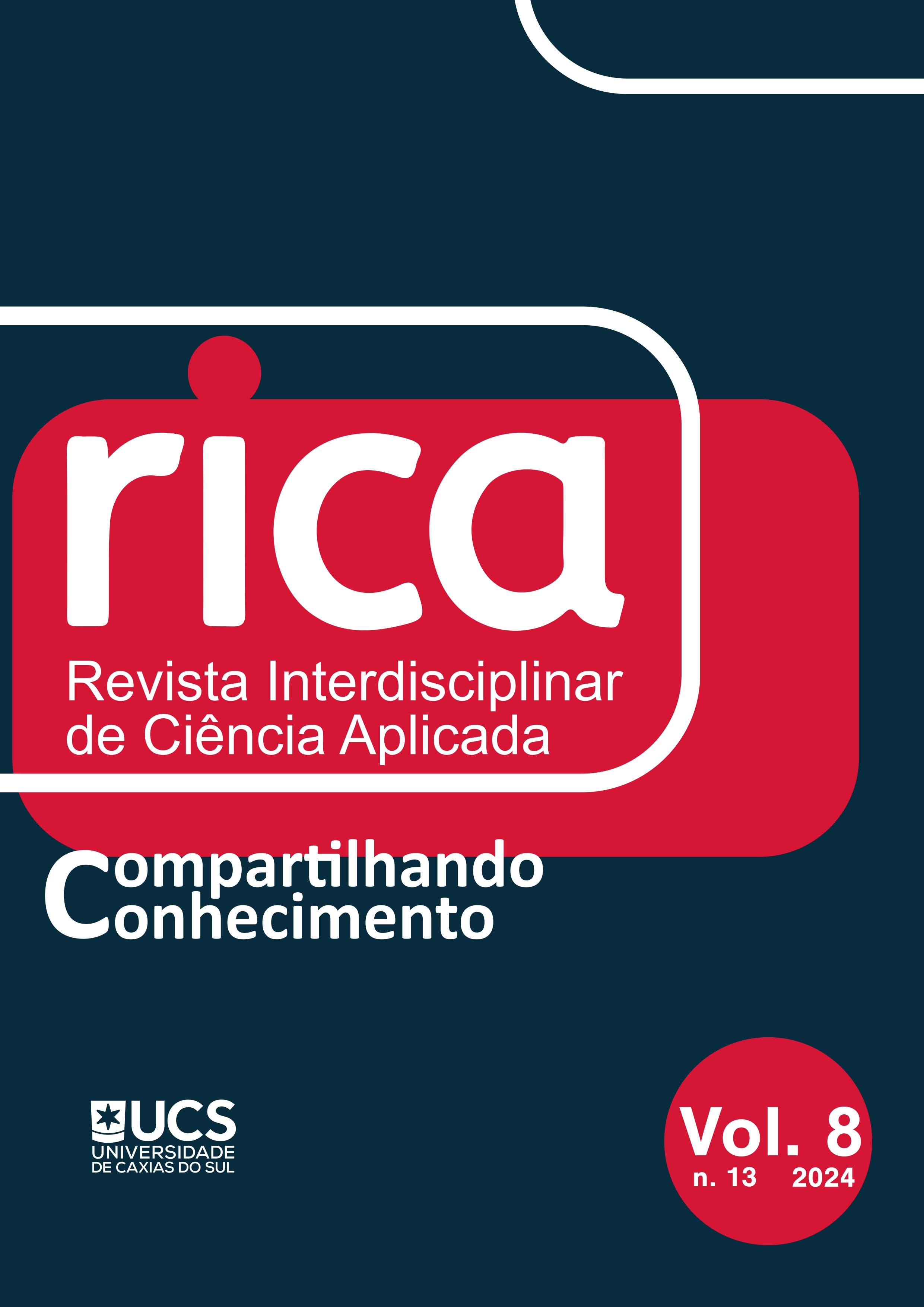Sociopsychological factors and trends in information addiction development among youth in modern societies
DOI:
https://doi.org/10.18226/25253824.v8.n13.05Keywords:
Internet addiction, cybersex addiction, online shopping addiction, web surfing, gambling addictionAbstract
The primary sociopsychological factors of the current spread of information addiction are as follows: expanded access to information, the popularity of social networks, marketing influence, Fear of Missing Out (hereinafter - FOMO) syndrome, which is a fear of lagging behind events or losing opportunities, desire for positive feedback and constant monitoring of news, and feelings of loneliness and depression. In this context, research in the fields of psychology, sociology, medicine, and related sciences that analyze the changes in human behavior regarding information consumption are relevant. This change may be manifested as satisfaction of the social need for moderately consumed information or as a psychological disorder – excessive consumption of information that harms the mental health of a person. Children, adolescents, and youth are the social groups that are the most vulnerable to information addiction in modern societies. The relevance of studying sociopsychological factors of information addiction is determined by the need to constantly monitor, prevent, forecast, and solve the problems of information addiction facing young generations to improve their quality of life, mental health, and full social integration into society.
References
Asieieva, Yu.O. (2020). Computer addiction, internet addiction and cyber addiction (historical overview of the definitions). Psychological Journal, 6(6), 57-65. https://doi.org/10.31108/1.2020.6.6.6
Bandelow, B. & Michaelis, S. (2015). Epidemiology of anxiety disorders in the 21st century. Dialogues in Clinical Neuroscience, 17, 327-335.
Goldberg, I. (1996). Internet addiction disorder. Cyberpsychology & Behavior, 3(4), 403-412.
Griffiths, M. (2001). Sex on the Internet: Observations and implications for Internet sex addiction. The Journal of Sex Research, 38(4), 333-342. https://doi.org/10.1080/00224490109552104
Hunt, M.G. (2021). Too much of a good thing: Who we follow, what we do, and how much time we spend on social media affects well-being. Journal of Social and Clinical Psychology, 40(1), 46-68. https://doi.org/10.1521/jscp.2021.40.1.46
Kaminska, O., Stezhko, Yu., & Gliebova, L. (2019). Psycholinguistics of virtual communication in the context of the dependence on social networks. Psycholinguistics, 25(1), 147-164. https://doi.org/10.31470/2309-1797-2019-25-1-147-164
Kemp, S. (2023). Digital 2023: global overview report. Retrieved from https://datareportal.com/reports/digital-2023-global-overview-report
King, A.L.S., Valença, a.m., Silva, A.C.O., Baczynski, T., Carvalho, M.R., & Nardi, A.E. (2013). Nomophobia: Dependency on virtual environments or social phobia? Computers in Human Behavior, 29(1), 140-144. https://doi.org/10.1016/j.chb.2012.07.025
Kroenke, K., Spitzer, R. L., & Williams, J. B. W. (1999). Patient Health Questionnaire-9 (PHQ-9) [Database record]. APA PsycTests. https://doi.org/10.1037/t06165-000
Kyrychenko, V.V. (2018). Age differences in the manifestation of Internet addiction (according to the results of the 2014 and 2018 research). Scientific Bulletin of Kherson State University, 1(4), 188-193.
Myronets, O.M., Dei, M., Korolchuk, O.L., Butenko, O.V., & Slabetskyi, O.N. (2022). Participants and victims of armed conflicts and hostilities rehabilitation: Issues and prospects. Journal of Nervous and Mental Disease, 210(3), 156-162. https://doi.org/10.1097/NMD.0000000000001430
Nyrhinen, J., Lonka, K., Sirola, A., Ranta, M., & Wilska, T.A. (2023). Young adults' online shopping addiction: The role of self-regulation and smartphone use. International Journal of Consumer Studies, 47(5), 1627-2030. https://doi.org/10.1111/ijcs.12961
Przybylski, A.K., Murayama, K., DeHaan, C.R., & Gladwell, V. (2013). Motivational, emotional, and behavioral correlates of fear of missing out. Computers in Human Behavior, 29, 1814-1848.
Roberts, J.A. & David, E.M. (2016). My life has become a major distraction from my cell phone: Partner phubbing and relationship satisfaction among romantic partners. Computers in Human Behavior, 54(1), 134-141. https://doi.org/10.1016/j.chb.2015.07.058
Rose, S. (2014). Towards an understanding of Internet-based problem shopping behavior: The concept of online shopping addiction and its proposed predictors. Journal of Behavioral Addictions, 3(2), 83-89. https://doi.org/10.1556/JBA.3.2014.003
Russell, D., Peplau, L.A., & Ferguson, M.L. (1978). Developing a measure of loneliness. Journal of Personality Assessment, 42(3), 290–294. https://doi.org/10.1207/s15327752jpa4203_11
Salnikova, A. (2021). Gambling in COVID-19 in the Ukraine: Stress, depression and anxiety. Psychosomatic Medicine and General Practice, 6(2), e0602274. https://doi.org/10.26766/PMGP.V6I2.274
Semenets-Orlova, I., Teslenko, V., Dakal, A., Zadorozhnyi, V., Marusina, O., & Klochko, A. (2021). Distance learning technologies and innovations in education for sustainable development. Estudios De Economia Aplicada, 39(5), 1-10. https://doi.org/10.25115/eea.v39i5.5065
Shydelko, A.V. & Vilchuk, L.H. (2019). Essence and features of cyber sex addiction. Technologies of Intellect Development, 3(4), 1-12. http://doi.org/10.31108/3.2019.3.4.12
Tsaras, K., Papathanasiou, I. V., Vus, V., Panagiotopoulou, A., Katsou, M. A., Kelesi, M., & Fradelos, E.C. (2018). Predicting factors of depression and anxiety in mental health nurses: A quantitative cross-sectional study. Medical Archives (Sarajevo, Bosnia and Herzegovina), 72(1), 62-67. https://doi.org/10.5455/medarh.2017.72.62-67
Tserkovnyi, A. (2004). Aspects of Internet addiction development. Social Psychology, 5(7), 149-154.
Yang, X., Fang, Y., Chen, H., Zhang, T., Yin, X., Man, J., Yang, L., & Lu, M. (2021). Global, regional and national burden of anxiety disorders from 1990 to 2019: Results from the Global Burden of Disease Study 2019. Epidemiology and Psychiatric Sciences, 30(36), E36. https://doi.org/10.1017/S2045796021000275
Yenin, M. & Korzhov, H. (2021). Online communication: Risks and prospects (on the basis of sociological study of public opinion in the EU countries). National Technical University of Ukraine Journal, 1(49), 22-30.
Young, K.S. (2016). Internet Addiction Test. Retrieved from https://www.iitk.ac.in/counsel/resources/IATManual.pdf
Yureva, L.N. & Bolbot, T.Yu. (2006). Computer addiction: Development, diagnosis, correction and prevention. Dnipro: Porohy.
Zaika, V.M. & Klevaka, L.P. (2021). The problem of Internet addiction in the modern world. In Organization of Scientific Research in Modern Conditions‘ 2021: Conference Proceedings (pp. 135-138). Washington: ISE&E & SWorld.
Downloads
Published
How to Cite
Issue
Section
License
Copyright (c) 2024 Yuliia M. Krasilova, Hennadii A. Chernykh

This work is licensed under a Creative Commons Attribution 4.0 International License.
Authors keep the copyright and cede to the journal the right of publishing first. Published works are licensed under a Creative Commons Attribution 4.0 International (CC BY 4.0) license, allowing the sharing of the work with recognition of the authorship and initial publication in this journal.






